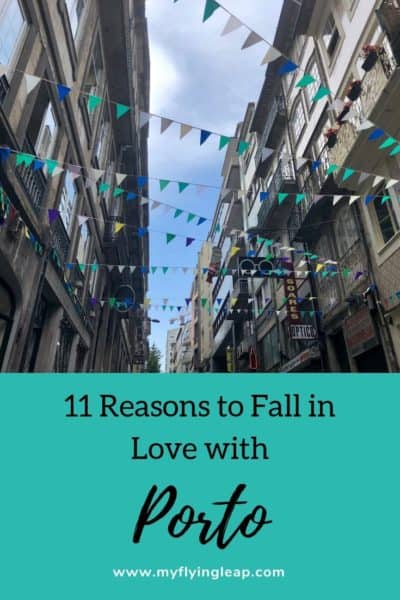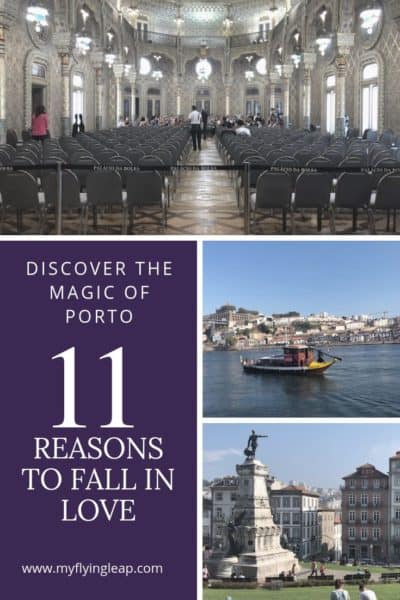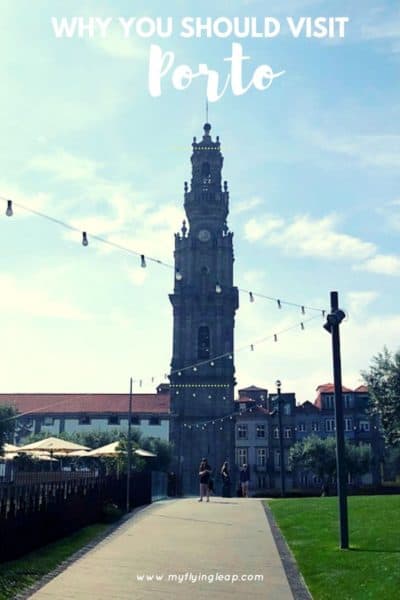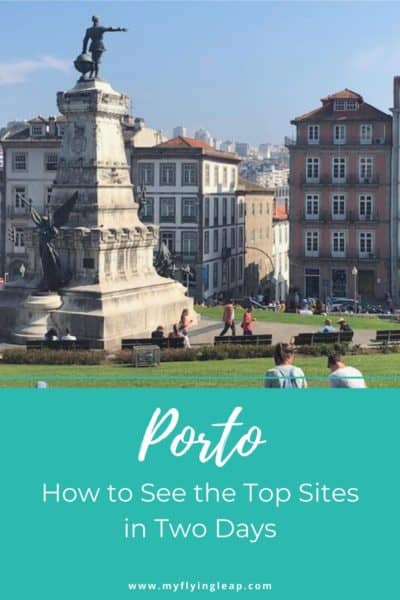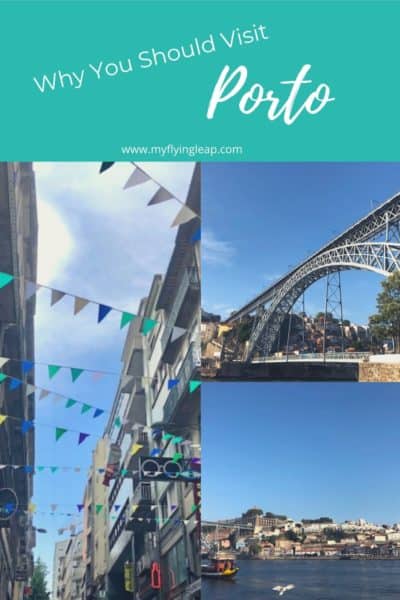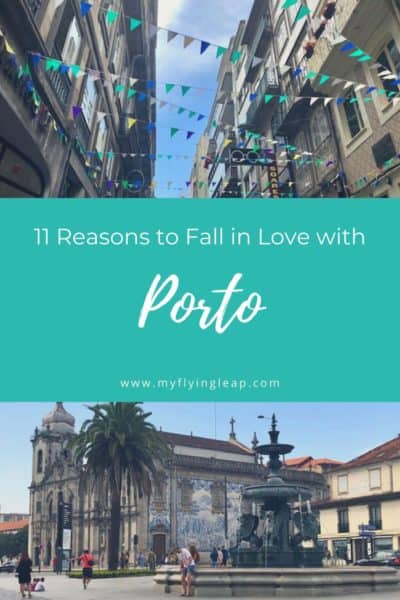Porto Attractions: 9 Fun & Quirky Reasons to Fall in Love
This post includes the top 11 attractions in Porto.
Have you ever visited a city and thought, “Oh, I’m in love. I could live here. I want to live here. This is it.”
That was my experience in Porto.
I have struggled a bit to write this for a number of reasons. I think, in a way, I wanted to keep it to myself a bit—like that special gift we got as a child and snuck away to our room to enjoy without sharing. I wanted just to wrap myself in my memories of this magical place and let my mind run over every moment I spent there.
If you follow my Facebook page or Instagram, I have shared that I’m still, two months later, having a hard time shaking Portugal from my thoughts. I loved the country overall, and I especially loved Porto.
There’s something uniquely perfect about it, at least for me. It’s a great size and very walkable with a lot of beautiful buildings (I love my historic architecture)!
It’s near water and close to a wine region known for its great diversity of wines. My soul is connected to this place, and I know I’ll be back. It’s not just a smaller Lisbon, as I expected, and it’s amazing. There are many Porto attractions to enchant you.
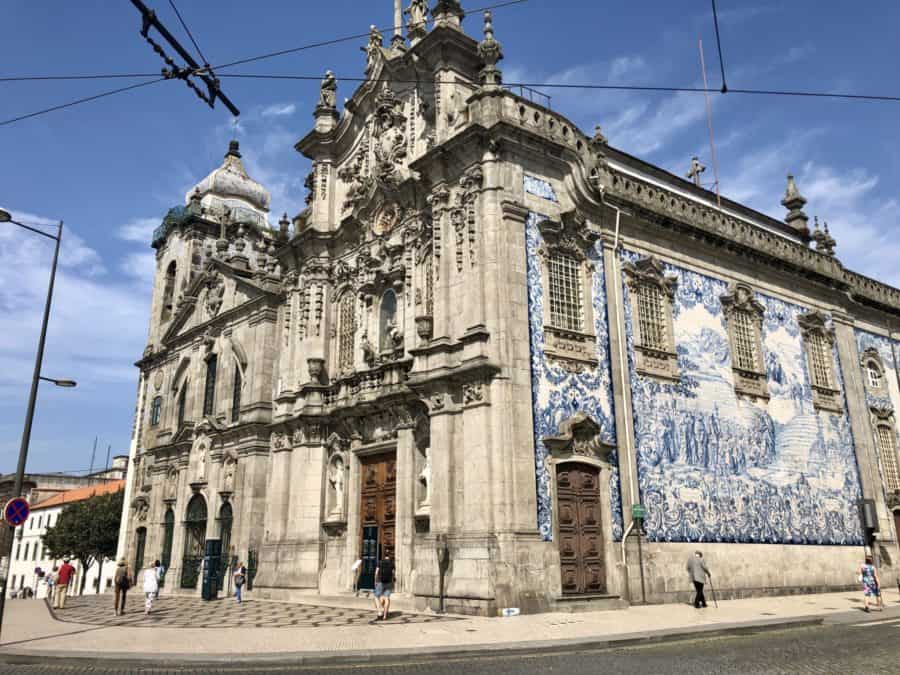
This post may contain affiliate links, which means I’ll receive a commission if you purchase through my links at no extra cost to you. Please read the full disclosure for more information.
1. Clérigos Tower (Torre dos Clérigos)
Clérigos Church and Tower is a stunning mid-18th-century Baroque masterpiece and one of the most well-known and distinctive structures in the city. It rises 75 meters high and is adorned with a clock tower at the top.
It’s a narrow and steep climb with timed entry but offers amazing panoramic views of this picturesque city.
It is open daily from 9 – 11, and you can book a day pass to climb the tower and tour the museum or a night pass (for the tower only) for 5€ ($5.50 USD) at the Clérigos Tower website. You can also add on a tour of the church for a little more. The address is R. de São Filipe de Nery, 4050-546 Porto.


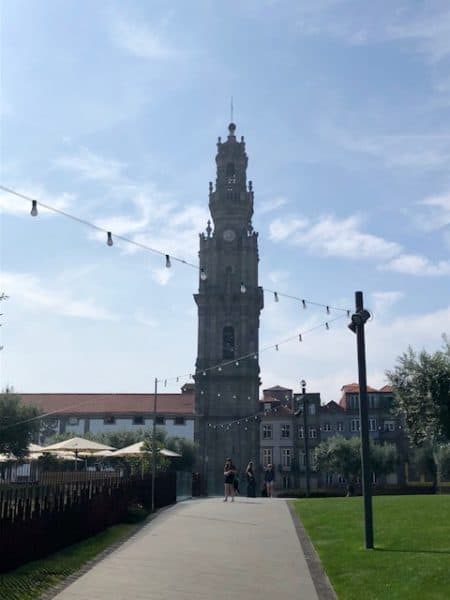
Pictures of the incredible view from the tower:

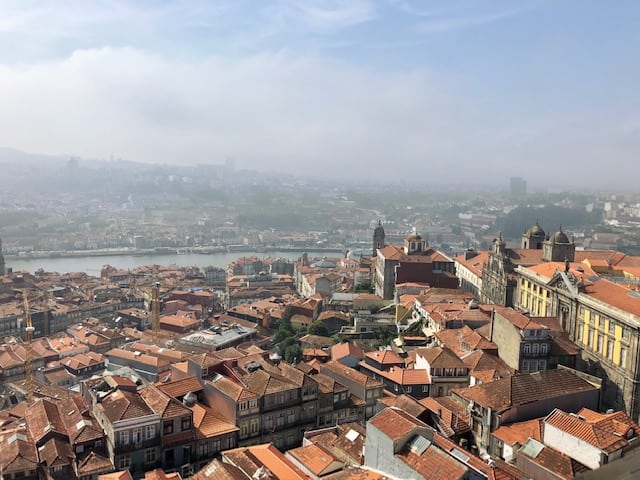
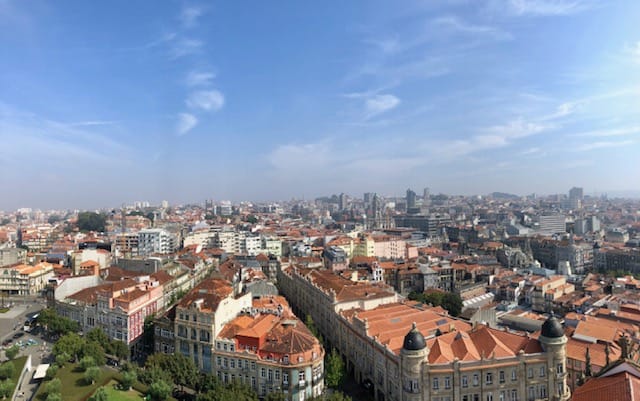
2. Hidden House
Nestled between the adjoining churches of Carmo Church and Carmelitas Church is a narrow slip of a house that you might not notice unless it was pointed out to you. The churches are actually two buildings not touching. However, it looks like one.
There are differing stories of how this came to be, but regardless of which story is true, it’s quite interesting. You can tour the house for a small fee.
Hidden House is located at Rue do Carmo, 4050-164 Porto, Portugal.
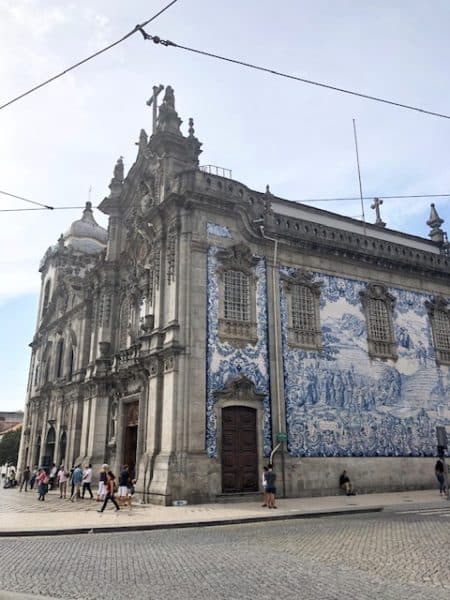
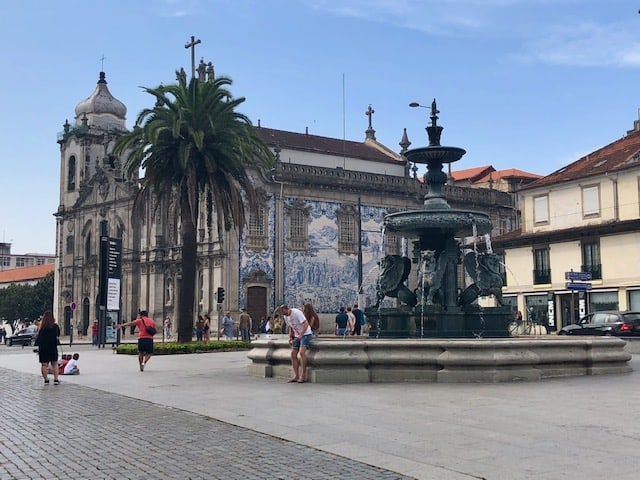
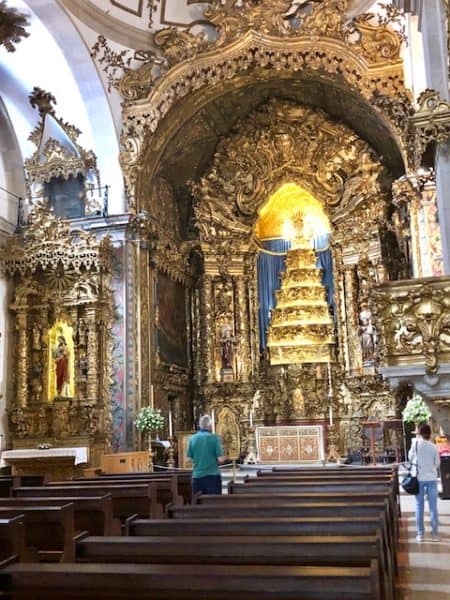
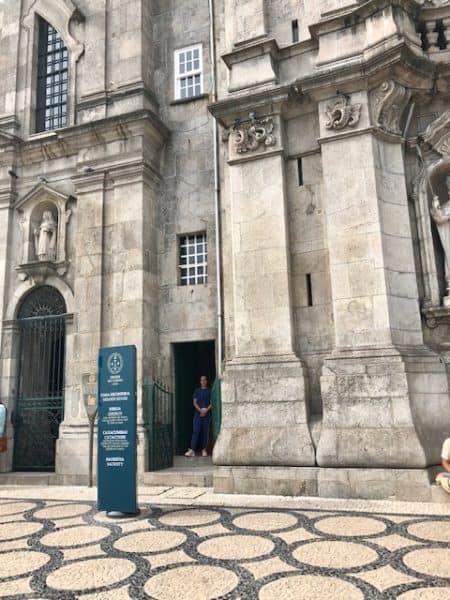
3. Lello Bookstore (Livraria Lello)
Lello Bookstore, also known as Chadron Bookstore after the first owner, was founded in 1869 and is one of the oldest bookstores in Portugal. The store was sold to the Lello brothers, who improved upon the facade.
It is said that this bookstore inspired the Harry Potter series, and when you look inside, it’s easy to believe. J.K. Rowling lived in Porto in the early 1990s and taught English there.
Unfortunately, you’re not able to take pictures inside, but there are a couple in this blog post that show the Harry Potter connection. There is now a charge to enter, given the rise in popularity, and the line is quite long, so get there early.
Lello Bookstore is located at Rue das Carmelitas 144, 4050-161 Porto, Portugal. It is open from 9:30 – 8 daily. You can purchase a voucher to visit for a specific day online for 5€ ($5.55 USD).
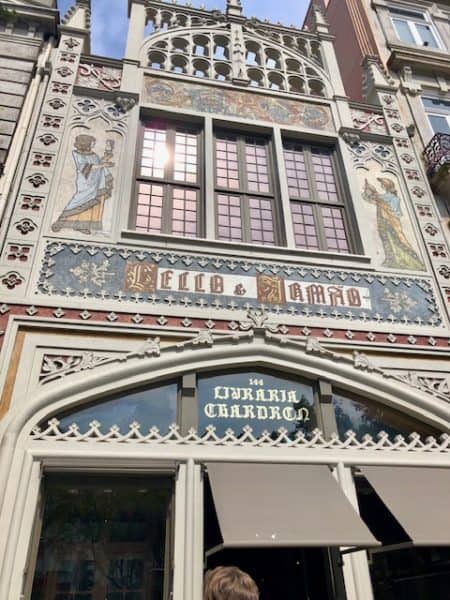
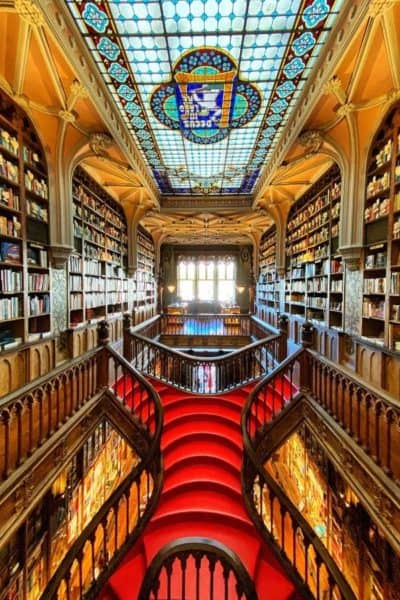
4. 13 Laughing Men Sculptures
You will see several sculptures in Cordoaria’s Garden that look like men of Asian descent sitting on bleachers in various poses, laughing. The 13 Laughing Men sculptures are a whimsical and fun display of several sculptures created by Spanish artist Juan Muñoz.
An added bonus is that the trees lining the main paths in the park are quite funky-looking, and I was told they had been infected by a fungus but survived.
Cordoaria’s Garden is located at Campo dos Mártires da Pátria, 4050-366 Porto, Portugal.
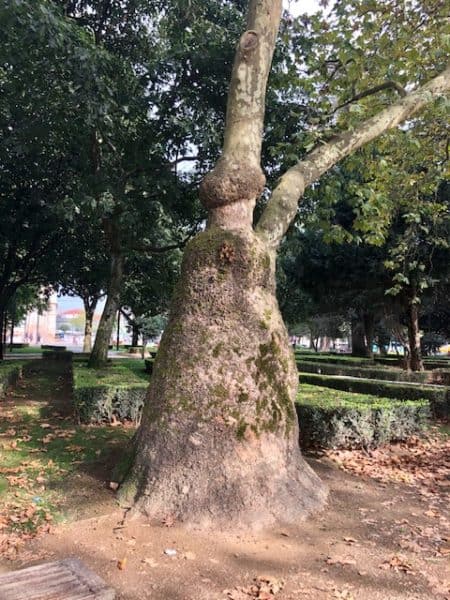
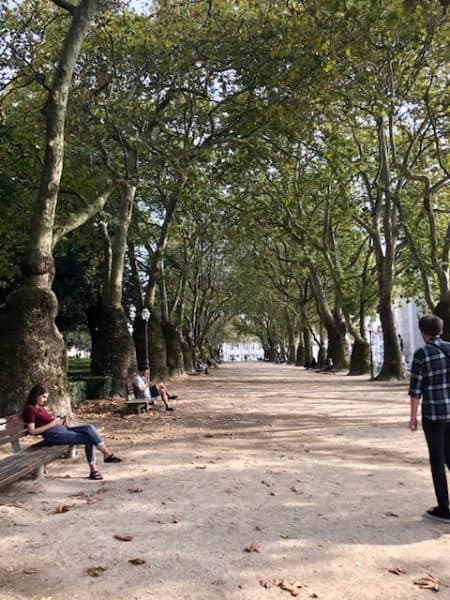

5. São Bento Train Station
It might sound strange to read a suggestion to go visit a train station, but like Grand Central Station in New York City, this one is worth your time. São Bento was built on the site of the Benedictine Convent of São Bento da Avé Maria.
The original building was burned in a fire in 1783 and later rebuilt. However, it was in a state of disrepair.
The existing building was erected in the early 20th century, and though it is striking, what is most impressive are the 20,000 azulejos tiles in the entryway. The elaborate tilework depicts scenes in Portuguese history in traditional blue and white.
The originals are special as they are no longer made traditionally as the process was toxic. There is a row of tiles in blue, brown, and yellow along the top of the walls in the main entryway that depict the history of transportation.
São Bento Station is located at Praça de Almeida Garrett, 4000-069 Porto, Portugal.
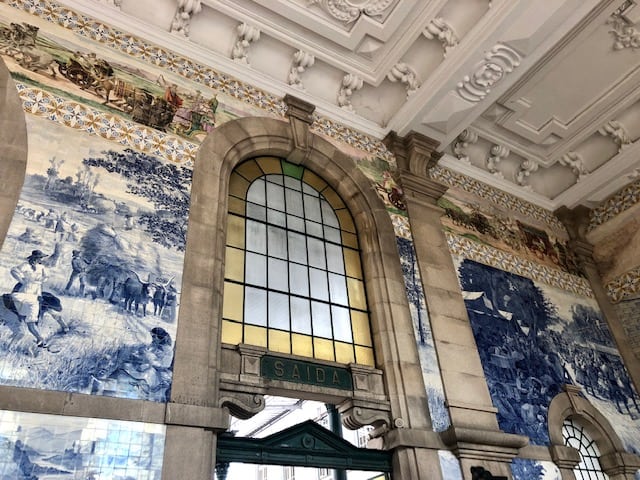
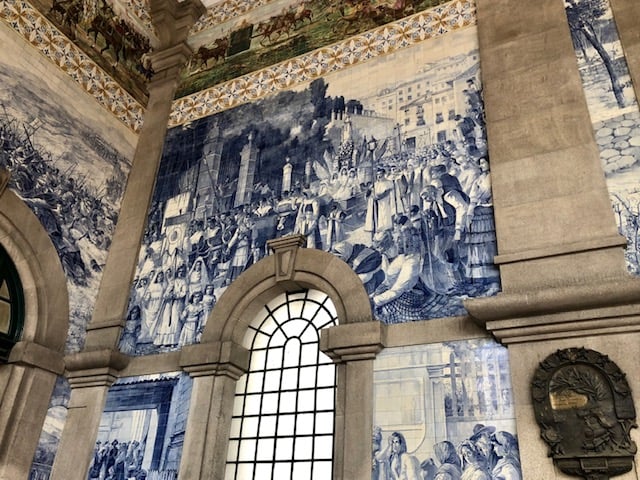
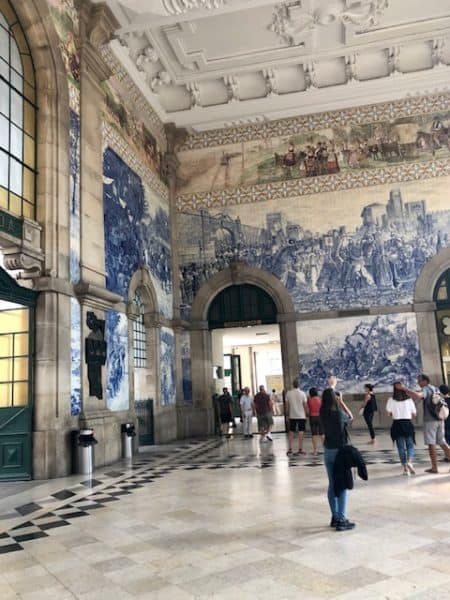
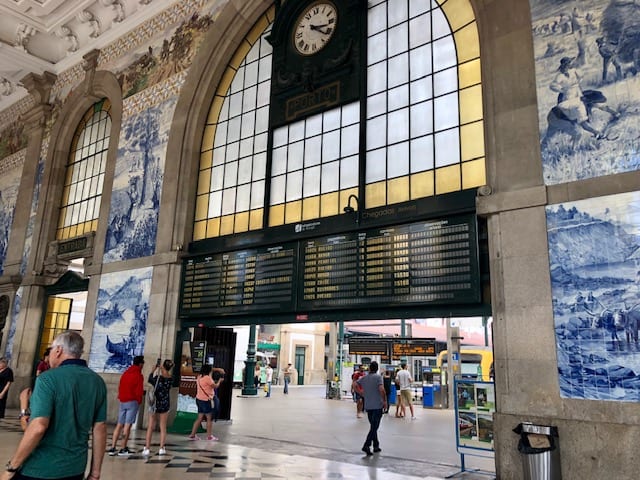
6. Bolsa Palace, or Stock Exchange Palace (Palácio da Bolsa)
This National Monument was built in the 19th century, and the existing decor was completed in the early 20th century. It once was the center of commerce for the city and housed the Porto Stock Exchange.
There is a grand main gathering area with two-story-high ceilings decorated with the countries on the stock exchange high up on the walls and intricate mosaics on the floor.
The tour walks you through many impressive rooms with stunning wood-carved furniture and a rather interesting art display.
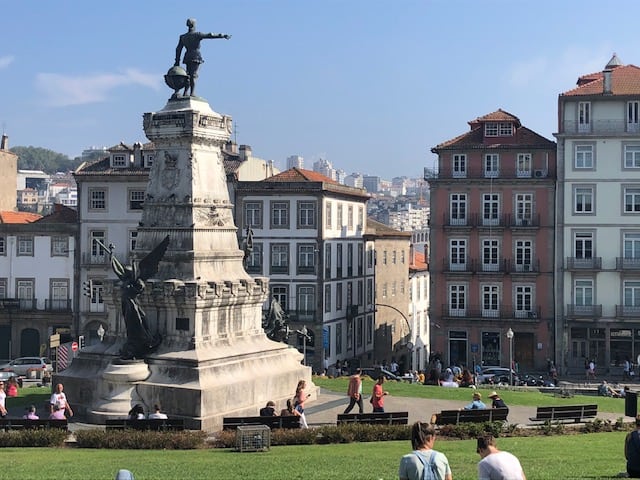
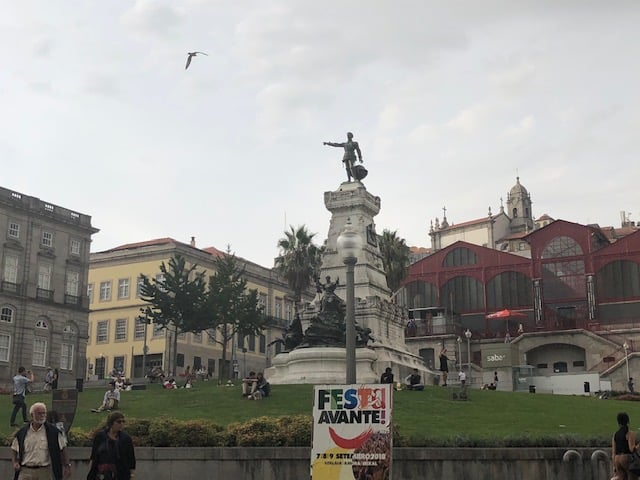
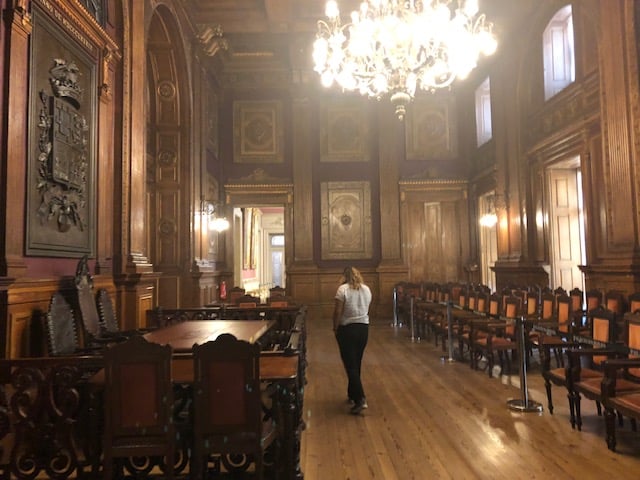
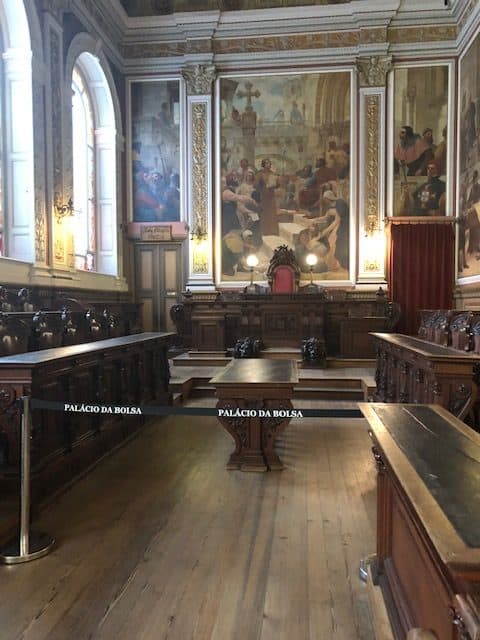
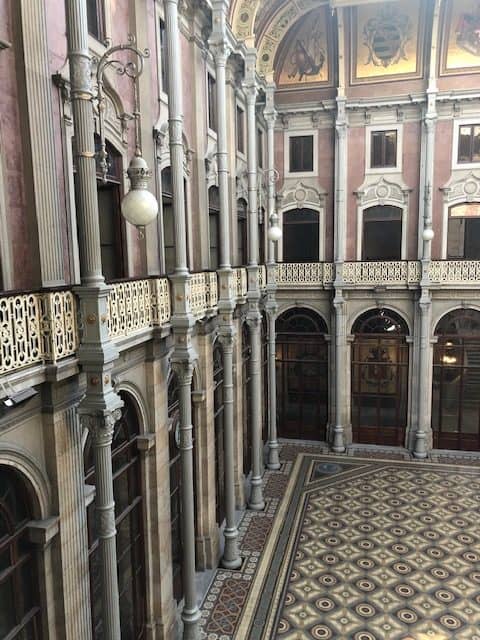
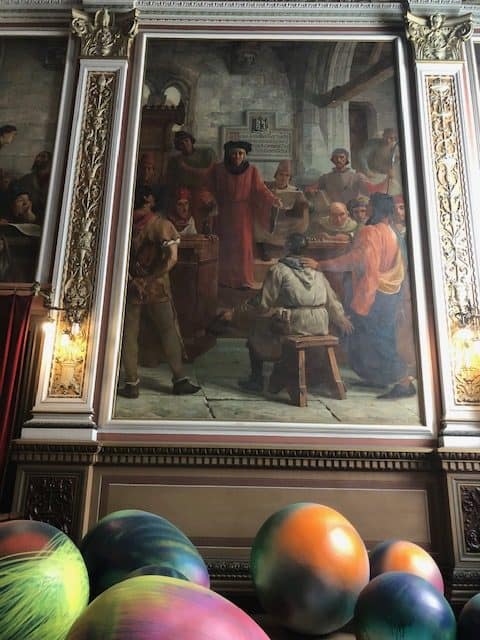
The not-so-hidden secret is the Arab Room. Stunning doesn’t begin to describe this incredibly ornate room decorated in the Moorish revivalist style and inspired by the Palace of Alhambra in Granada.
The beauty is almost overwhelming, and every inch is decorated. This room is now used to receive heads of state and dignitaries, and we had the lovely bonus of taking a tour while a group of students was practicing for an orchestra.
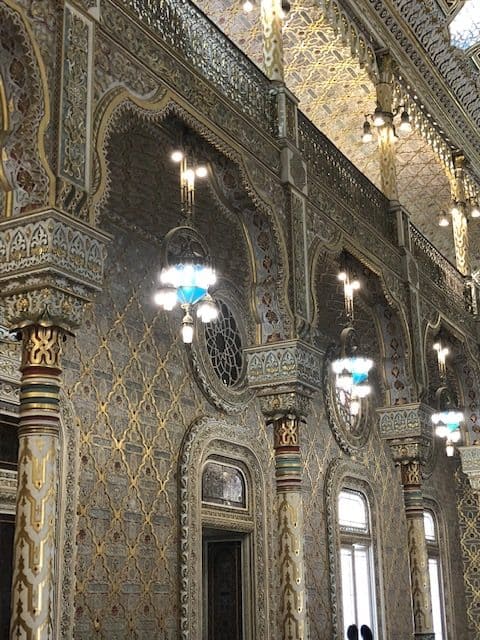
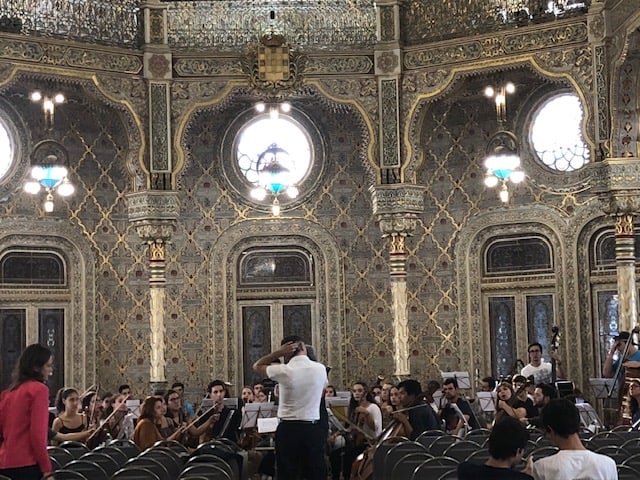
Tip: I was unable to book a tour online and went there instead. I had been told to plan for some time as they have the interesting practice of letting the first person who signs up for a tour determine the language.
I did have to wait for an hour and took the opportunity to walk around a bit. There is a beautiful park in front of the building, and the old Flower Market is around the corner.
Bolsa Palace is located at Rue de Ferreira Borges, 4050-253 Porto, Portugal. It is open from 9 – 6:30 daily from April to October and from 9 – 1 and 2 – 5:30 from November to March. The cost for a one-hour tour is 10€ ($11.11 USD).
7. Ribeira District and Pont Luis I Bridge (Cais da Ribeira and Dom Luis I)
Ribeira is the area in Porto that appears to tumble down to the Duoro River. It’s a popular tourist destination near the Pont Luis Bridge, where people cross over to go to Gaia. It’s the location of many old, traditional Porto houses and where the poor used to live.
Usually, living on the water is desirable, but it was not due to flooding. If you ignore the throngs of tourists, the area is incredibly charming.
There is a vibrancy here, in Ribeira, Gaia, and on the bridge. An added bonus is watching (insane) people rallying the crowd for donations to jump from the bridge. And jump, they did!
A tip: While the restaurants on the water in Ribeira have beautiful views, they are often very touristy and more expensive. My host recommended Taberninha do Manel across the river in Gaia (also very touristy in general, but this place was amazing.)
The bridge is located in the Ribeira neighborhood of Porto, crossing the Duoro River.
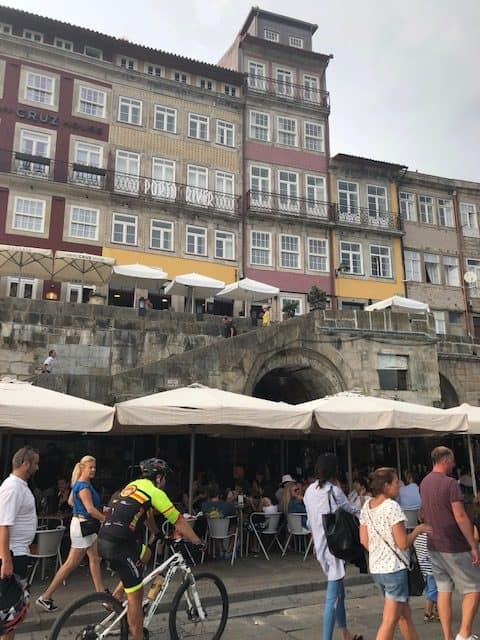
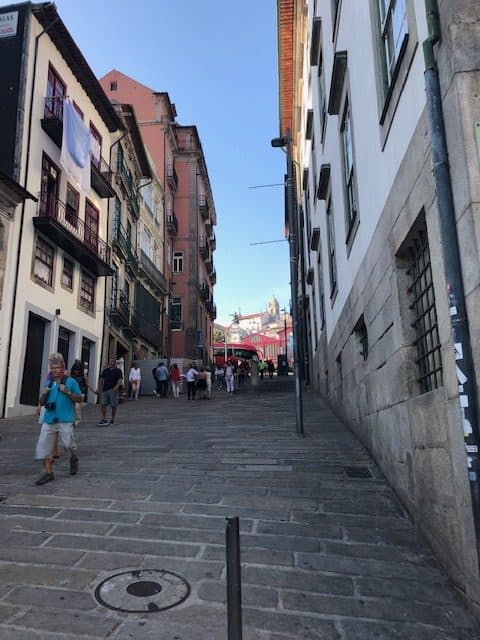
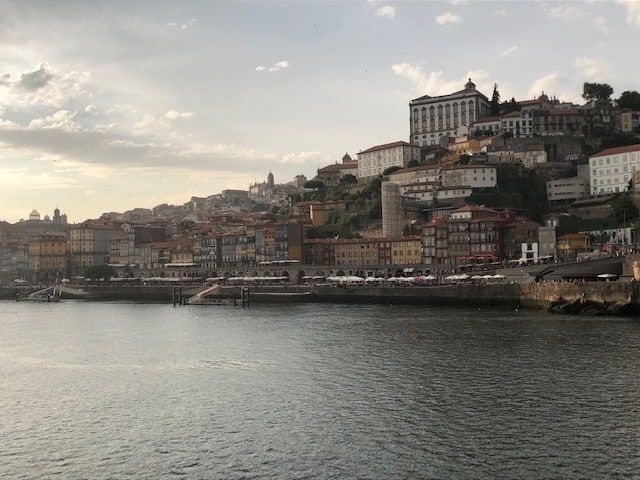
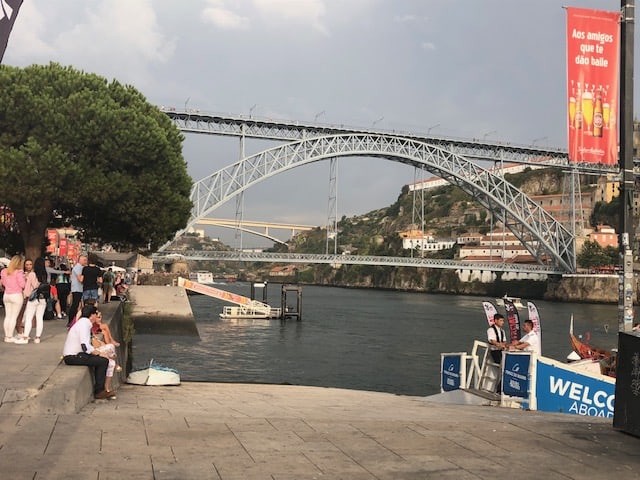
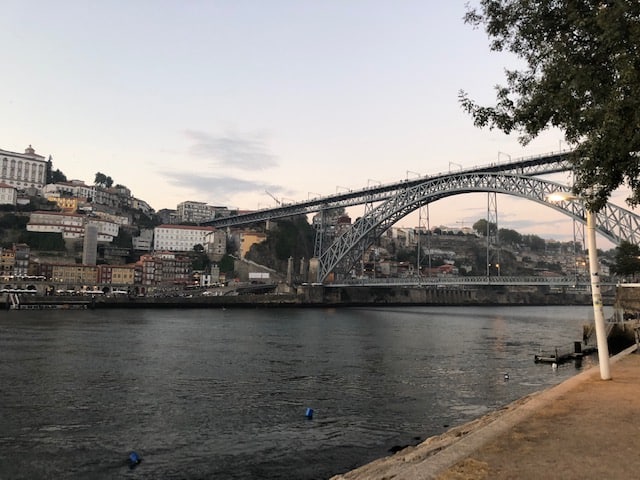
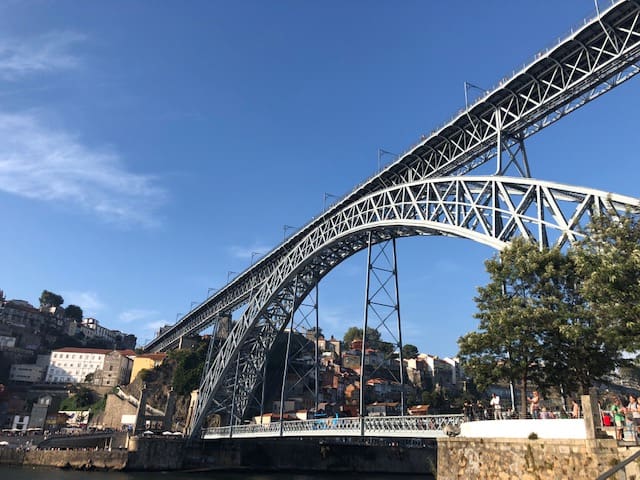
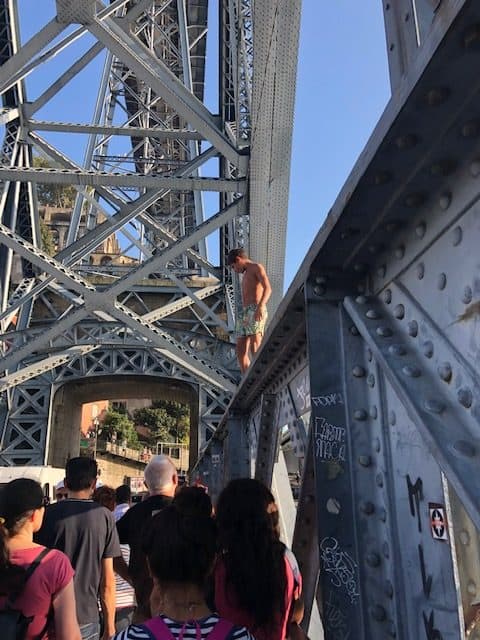
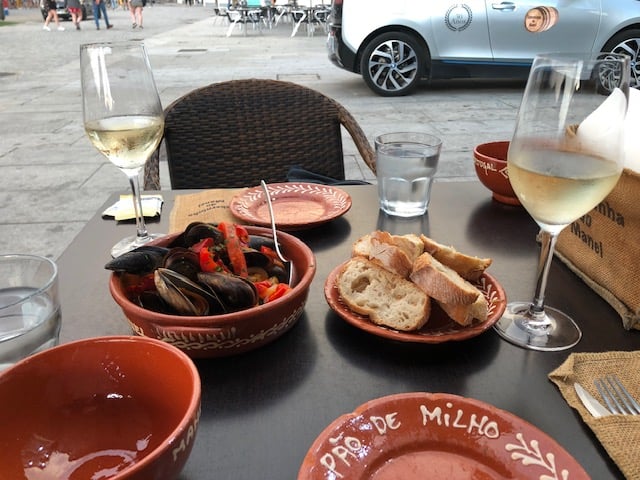
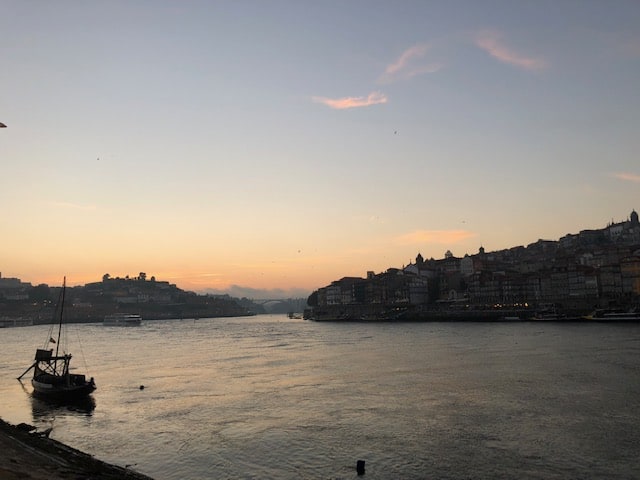
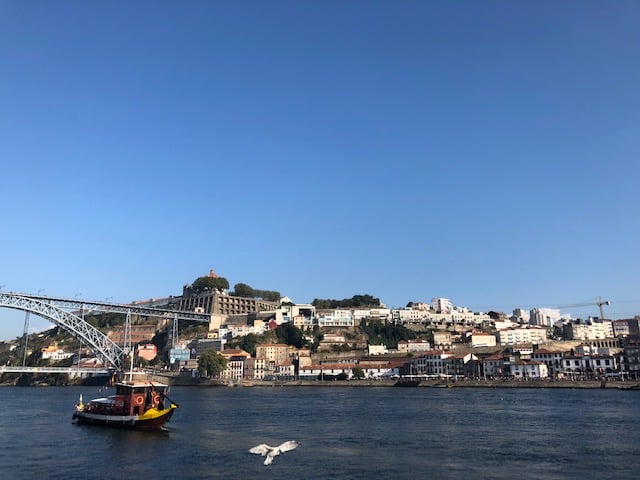
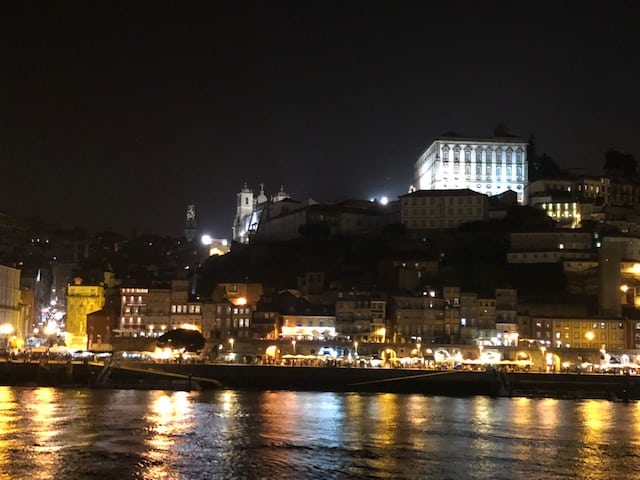
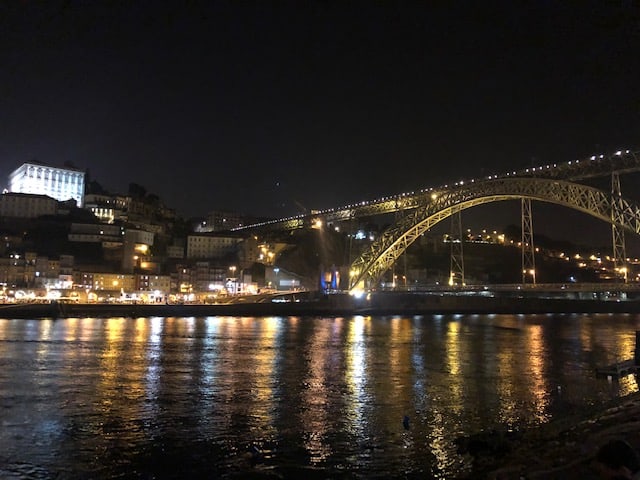
8. McDonald’s Imperial
McDonald’s?? Yes, you read that right. Often voted the most beautiful McDonald’s in the world–I know, it’s crazy but true! This was formerly the Imperial Café, a historic art deco building from the 1930s.
My walking tour guide said that there was extensive negotiation before approval was granted for McDonald’s to open in this historic location. McDonald’s Imperial was opened in 1995 after a remodel honoring the original building.
It has the most modern ordering inside, and for an added bonus, you may see a collective of students donning what appears to be Harry Potter-like garb playing music outside.
McDonald’s Imperial is located at Praça da Liberdade 126, 4000-322 Porto, Portugal.
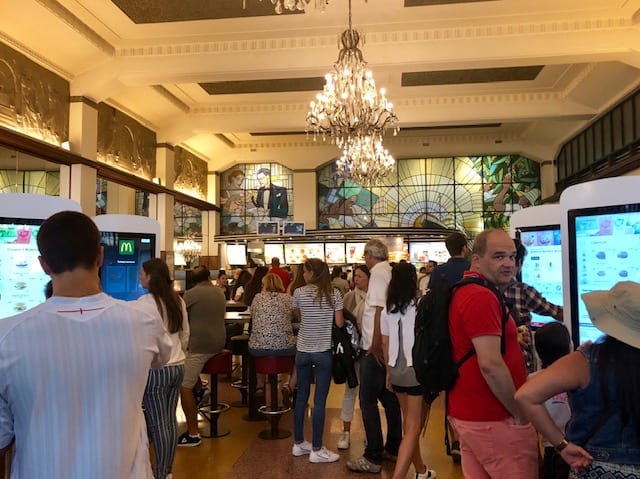
9. Porto Cathedral & the Camino de Santiago
The Camino de Santiago, or Way of Saint James, is a pilgrimage leading to the shrine of the apostle Saint James the Great in the cathedral of Santiago de Compostela in Spain. There are several paths to take through adjoining countries, and Porto is on the Portuguese Way, starting at the Porto Cathedral.
I met two amazing women doing this trek, one while climbing Clerigos Tower and the other randomly on a busy street near Ribeira. I introduced them via social media so they would have a connection and virtual support.
I learned from them that people open their homes to the pilgrims taking this path, providing food and shelter for a very small fee (often 5 Euros a night.) I had the opportunity to follow one of them as she documented the trip daily on Facebook, and it seemed like an amazing experience.
Porto Cathedral in the picture is located at Terreiro da Sé, 4050-573 Porto, Portugal. It is open daily from 9 – 12 and 2:30 – 7.
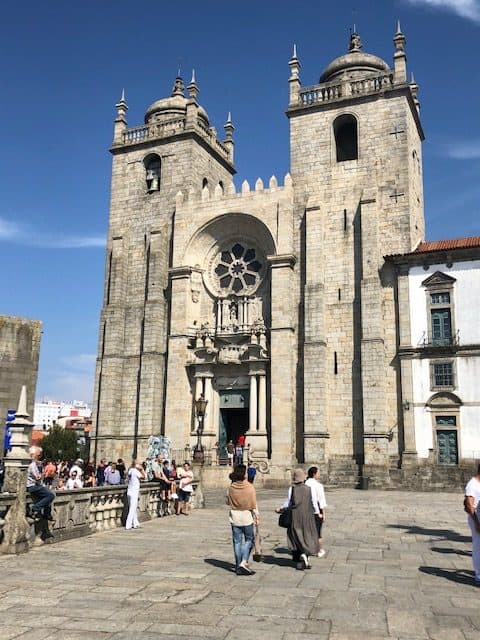
UNESCO World Heritage Site
Porto, or Oporto in Portugal, is the second-largest city in the country and is sometimes known as the “capital of the north.” It was named Portus (port) for its proximity to the Duoro River.
Porto has a long history of over 2,000 years and was populated and raided by many groups, including the Visigoths, Normans, Moors, and Romans.
The historic center is a UNESCO World Heritage Site. According to UNESCO, “The urban fabric of the Historic Centre of Oporto and its many historic buildings bear remarkable testimony to the development over the past thousand years of a European city that looks outward to the sea for its cultural and commercial links.”
Lest You Go Hungry
Port Wine
Port wine is a fortified wine that is thicker and sweeter than many traditional wines. It is made exclusively in the Duoro Valley wine region in northern Portugal. There are other fortified wines made in different areas of the world, but they may not be called “Port wine.”
This wine is one of the most internationally famous exports from the region, and though it’s named after Porto, the cellars are located across the Duoro River in Villa Nova de Gaia, or Gaia, as it’s locally known.
My host recommended going to Cálem Cellars, which was Portuguese-owned until a few years ago. I really enjoyed the tour and learned a lot. They also offer interesting and impressive displays in their museum of sorts.
We did a tasting and got to try a ruby and a white. Did you know there are four different styles of port wine? I only knew about ruby and tawny, but there are also white and rose. Fado music is here as well as in Lisbon.
We did join the show, though I wouldn’t recommend it as it had a sound of Fado + lounge music, which was not what we were aiming for.
Cálem Cellars is open from 10 -7 daily except for Sunday when it is open from 10 – 6. It is located at Av. de Diogo Leite 344, 4400-111 Vila Nova de Gaia, Portugal. The cost for the tour and taste (2 wines) plus a visit to the little museum is 13€ ($14.45 USD), and the cost for the tour, taste, and Fado is 21€ ($23.35 USD).
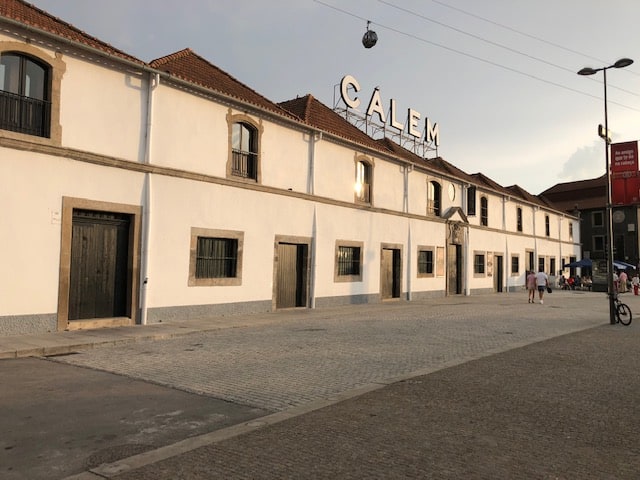
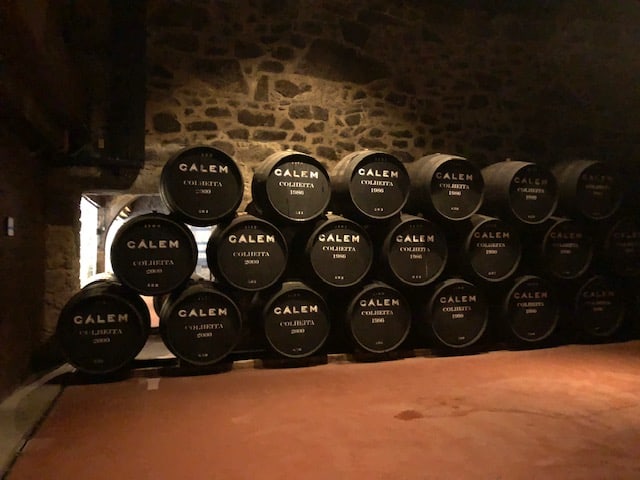
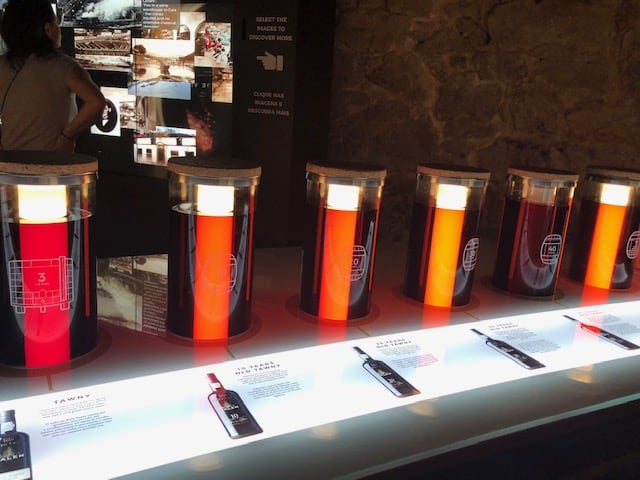
Francesinha
I read about this iconic Porto sandwich before I visited and had decided I wasn’t going to get one. Frankly, it didn’t sound very interesting to me as it’s a thick sandwich (a rare thing in Europe, in my experience) made of meat, meat, meat, and more meat covered in thick cheese.
Sure, it might taste good, but it just didn’t sound very interesting. My host highly recommended getting one at Cafe Santiago, and though I got two heavy meals out of this gut-busting sandwich, I’m glad I did!
Francesinha means “little Frenchie” in Portuguese, interestingly enough. A francesinha is made with two slices of thick bread, wet-cured ham, linguiça (a Portuguese sausage), steak, or roast beef covered in a thick melted cheese with a beer sauce.
Traditionally it’s served with a fried egg on top and french fries, though I skipped those. The sausage has a little bit of spice, and the sauce is lick-your-plate good. They had around 10 different versions to choose from.
I ate at the bar and recommend that, as I watched them being made in an impressive conveyor-belt-like process on the grill.
Cafe Santiago is located at Rue de Passos Manuel 226, 4000-382 Porto, Portugal. It is open on Saturday, Monday, and Friday from 12 – 10:45, on Tuesday and Thursday from 12 – 11, and it is closed on Monday and Wednesday. A francesinha will set you back around 10€ ($11.10 USD) plus or minus, depending on the extras you get with it.
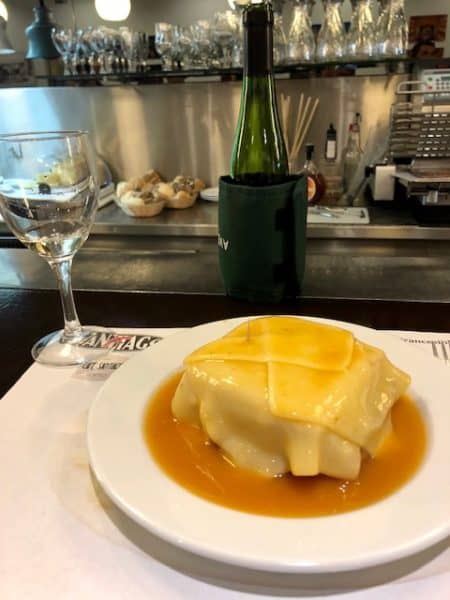
Day Trips from Porto
If you can find a way to pull yourself from Porto, even for a little while, there are a number of very popular day trips from Porto.
Duoro Valley
If you are a wine enthusiast and want to know where the magnificent wines of Portugal come from, go to Duoro Valley. It’s a beautiful tapestry of green as far as your eyes can see. Learn about the red, white, and green wines of Portugal as well as the ports. It’s a day trip you’ll never forget!
Guimarães
This small medieval city may be a mouthful to pronounce, but there’s no denying why you should go. Once you arrive, you are transported to a beautifully preserved medieval town center. It’s actually a UNESCO World Heritage Site, so you know it’s worth your time.
Guimarães is known as the birthplace of Portugal. Wander the cobbled streets and have a bite (or a drink!) in Oliveira Square. Visit Guimarães Castle, and take the cable car up Penha Mountain for incredible views of this city. There, you’ll find the impressive Penha Sanctuary, with a number of peaceful trails to explore.
Guimarães is easy to get to by bus, or you can find group tours visiting Guimarães alone or with Braga. They are popular day trips from Porto.
You May Also Like The Birthplace of Portugal: Guimaraes
Braga
Braga is another medieval city with a small historic city center. It’s quaint and a great place to walk around. Visit Porto Nova, the main gate of Braga, the cathedral, one of the oldest in the country, and the Gardens of Santa Barbara.
There are a lot of beautiful historic buildings in Braga. Don’t forget to stop at Casa das Bananas to learn about Bananeiro, a unique holiday tradition found only in Braga.
One of the primary reasons people visit Braga is to see Bom Jesus do Monte. It’s a sanctuary high on a mountain overlooking the city of Braga. You can climb up the massive staircase or take a funicular up to see the sanctuary. It’s impressive!
You May Also Like Day Trips from Porto: Braga
If you’re looking for day trips, these look interesting.
Why I Can’t Get Porto out of my Mind
Porto is… Porto. It’s magnificent. It may just be one of those cities you must see for yourself to really understand why I fell in love with it. I can share the vibrancy, the history, the culture, the food and wine, and the historical architecture that many other cities in Europe have, though Porto really lodged in my heart.
I can picture myself living there someday and can’t wait.
My hesitation to write about Porto may have also been that I loved it so much and wanted to do honor to the city. I hope I have done that.
Porto deserves a few days to explore and really get to know its charm. It is a fairly small city, though, so Porto can be done in one day if that’s the time you have. It’s a busy day, and you do a lot of uphill walking.
I found these great tours in and around Porto that look interesting. I still recommend doing free walking tours to get to know the city, but with these, you can get to know it even more.
You Might Also Like
- The Best Places to Visit in Portugal
- What Makes Portugal So Special
- The Birthplace of Portugal: Guimarães
- 9 Things to Do in Sintra—The Best Day Trip from Lisbon
- Why You Should Visit Belém
- Braga City of Archbishops—The Best Day Trip from Porto
- Fun Things to Do in Lisbon—Conquer a Castle by Elevator
- Who Makes the Best Pastel de Nata? My Unpopular Opinion
- The Best 2 Days in Porto Itinerary
- 3 Days in Lisbon—The Ultimate Itinerary
- Where to Stay in Porto: Best Areas & Accommodation
Like it? Pin it!
